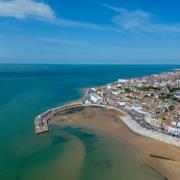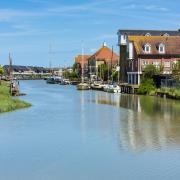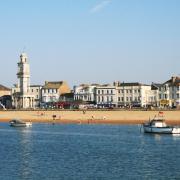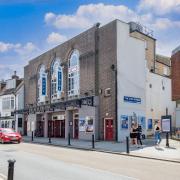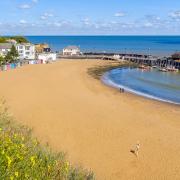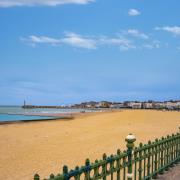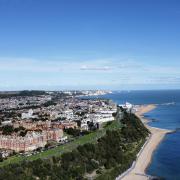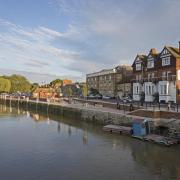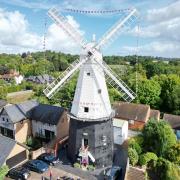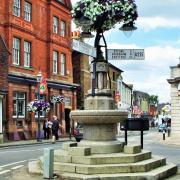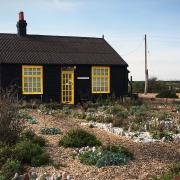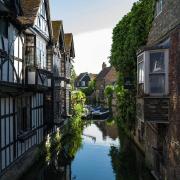Tonbridge has many natural advantages – its history, river setting, sportsground, great transport links – but it also plays host to a famous boys' boarding school that engages with the whole community
Tonbridge School and its role in the local community
Tonbridge has many natural advantages – its history, river setting, wonderful sportsground, fantastic road and rail links – but it also plays host to a famous boys’ boarding school that engages with the whole community – this month’s cover star, Tonbridge School
The ancient market town of Tonbridge was recorded in the Domesday Book 1087 as Tonebrige, thought to be a contraction of ‘town of bridges’, due to the many streams the High Street originally crossed.
And today, if you walk from the south end of town, past the rail station (one of Kent’s busiest) and up the long High Street you’ll notice a distinct divide in the character and age of your surroundings at ‘Big Bridge’, which straddles the Medway and is overlooked by the castle, or rather its magnificent remains.
The ‘Old Town’ begins here and both on the High Street and in its side streets you’ll find more than 150 listed buildings, including the heavily timbered Chequers pub, stately Rose & Crown and The Port Reeve's House in East Street, believed to be the oldest house in town.
Wander up Church Lane and you’ll pass the 15th-century former guildhall called Tyger’s Head, now home to Genty Fine Art, before reaching the inspirational parish church of St Peter and St Paul, which has been at the centre of the community of Tonbridge since the Saxons settled here (see also My Town).
Back on the High Street, carry on in a Hildenborough direction (where Dame Kelly Holmes lives) and you’ll finally come to Tonbridge’s biggest employer and arguably the jewel in its crown: Tonbridge School. And at least one of those statements may surprise you
Founded in 1553 by Sir Andrew Judde, this is one of the leading boys' boarding schools in the country and of international repute. Largely self contained within its vast 150-acre site, you might be forgiven for thinking the school had little to do with the life of the town and the wider community. You’d be wrong.
For a start, it employs around 450 support staff, a number that includes several generations of the same family working here in everything from catering to groundskeeping. Food plays a big part in school life: there are nine kitchens, each with their own chef, serving 13 separate dining rooms every single day. With nearly 800 boys and 100 teachers to feed, it’s no wonder that local farmers and suppliers benefit – while eating seasonally and locally is good for the boys, too.
And the hundreds of boarders walking into the town when they have free time are adding to the town’s clientele – despite the disappearance of their favourite Woolworths from the High Street!
Headmaster Tim Haynes, at the helm for seven years now, adds: “We’re not that strict on haircuts here, but there are an extraordinary number of barbers in town …!” Has he just solved a local mystery as to why Tonbridge has nearly 30 hairdressers?
Tim acknowledges the “huge educational heritage” in Tonbridge, with not only one of the best independent schools in the country, but also three of the best grammar schools, very good high schools, the groundbreaking K College, the Schools at Somerhill (Yardley Court and Derwent Lodge plus Somerhill Pre-Prep and Nursery), and a large number of primary schools.
Being outward looking, being engaged with the outside world, whether that’s on Tonbridge High Street or on another continent, is a really important part of the boys’ experience
“What has changed massively is that Tonbridge School used to be a very ‘bubble-like’ community,” he says. “Although we have been on this site for 450-odd years, culturally we turned our back on the town and possibly they turned their back on us as well – but there was very much a divide a generation ago. I would be surprised if you would find much sense of that any longer.
“We think that being outward looking, being engaged with the outside world, whether that’s on Tonbridge High Street or on another continent, is a really important part of the experience of a boy being here.”
Indeed, there is a vast array of outreach activities, with more than 100 boys going off campus on Wednesday afternoons to work in primary schools or with charities and community projects in and around the town. Local primary schools also visit on Wednesday afternoons and Saturday mornings to do science experiments taught by Tonbridge School boys.
Pupils engage in lots of fundraising for charities, nationally, internationally and locally, especially for The Bridge Trust and Hospice in the Weald.
Summer 2012 will catapult the school even further into the wider community; in July it plays host to not only the Australian field and track team but also the Ukranian and Belarus judo teams, who will all be using Tonbridge School’s spectacular training facilities before moving into the Olympics Village.
“The Olympic teams are mainly training at universities, which tend to be quite removed from their towns, so I think we are probably more involved than any other independent school in the country – and the fact that this school is also in the town means there is an opportunity for the community to share in the excitement in a way that might be almost unique in the UK,” says Tim.
“Every summer we hold an enormous community day and in 2011 we had 700 primary schoolchildren being coached and taught and led in workshops and all sorts of activities by our boys,” says Tim. “This summer we are planning to have a Schools Olympics event involving some 1,000 primary schoolchildren, and a secondary schools event is also taking place based on our facilities. We will be involved in the Tonbridge Town Festival and some of their events will take place here – including an Olympics-style opening ceremony.”
But on an ongoing basis, Tonbridge Schools’ key linkage with the town and local community is through its fantastic arts and sports offer. The EM Forster Theatre, now 12 years old, is used a great deal by touring companies as well as the boys themselves and other local schools, particularly at Christmas. Dance, poetry reading, a public arts programme are all held here and the local public always books a “significant number” of tickets.
Meanwhile the Sports and Media Centre - which opened in 2008 and Tim describes as an “extraordinary story of growth and of interaction with the local community” – is regularly used by some 50 local sports groups and clubs while firmly maintaining its primary use as a facility for the boys.
“On any evening of the week, including weekends, if you go down there it will be buzzing with activity, with everything from squash to hockey, football and cricket nets going on.
“On top of that we run a Members’ Leisure Club which has a membership of 2,500 and has proved incredibly successful. At 6.30am there’s quite a cohort of people using the 25m pool and gym before putting their suits on and heading for the train station, because of course it’s brilliantly convenient. There isn’t anything quite like it in Tonbridge.”
GET IN TOUCH
Tonbridge School satnav postcode: TN10 3AB 01732 365555
Members Leisure Centre satnav postcode: TN10 3AD 01732 304111
EM Forster Theatre 01732 304106
Tonbridge Castle 01732 770 929
St. Peter and St. Paul’s Church 01732 770962
Genty Fine Art 01732 369565
READER OFFER
Kent Life readers can buy a copy of A Duty to Serve, Tonbridge School and the 1939-45 War, by former Tonbridge School history teacher David Walsh, at a reduced price of �27.50 (rrp �40). The hard-back book can be purchased from The Tonbridge School Shop, 01732 304240 or shop@tonbridge-school.org. Please make sure you mention Kent Life March edition when you make your purchase to get the reduction.
GETTING THERE
Tonbridge is in west Kent, four miles from Tunbridge Wells and approx. midway between London and Hastings. Take junction 5 off the M25 for the A21, and from here take the A26. There are excellent railway links to London (40 minutes) and the rest of Kent.
Satnav postcode: TN9 1BG.
PROPERTY PRICES
Generally on the high side, with one- and two-bedroom flats being in the region of �143,000 and �227,000 respectively, and a two-bedroom house about �222,000. A three-bedroom semi might set you back �290,000, while a four-bedroom detached house is likely to be upwards of �485,000.
MY TOWN
Mark Brown, Rural Dean and Vicar of St Peter and St Paul
Tell us a bit about you
I’ve been in the parish for over four years now. I’m married to Allison and we have five children - plus two Springer spaniels. Before I came to Tonbridge I had a travelling role, resourcing the wider church, and was made a founder member of the College of Evangelists in 1999, one of the titles given by the Archbishops of Canterbury and York to support the role.
What does a rural Dean do?
I work closely with the other vicars in the area, meeting with them regularly to support and encourage their work. The experience is mutual and we work together as a team.
What do you like about parish work?
Helping people. It’s fascinating to learn about the many different ways they seem to encounter God. This month we’re running a group ‘This is your faith’ (13, 20 and 27 March) with food and discussion. We’re hoping to have a really good time, the idea being to enable people to discover faith for themselves.
What would you change about Tonbridge?
The amount of traffic on the High Street.
Your favourite walk?
Through the sportsground to Haysden Lake.
Your favourite restaurant?
ASK, on the High Street (01732 353611), it’s a great Italian restaurant.
Tonbridge in a sentence?
It’s a friendly town with a huge variety of volunteer and community groups.



